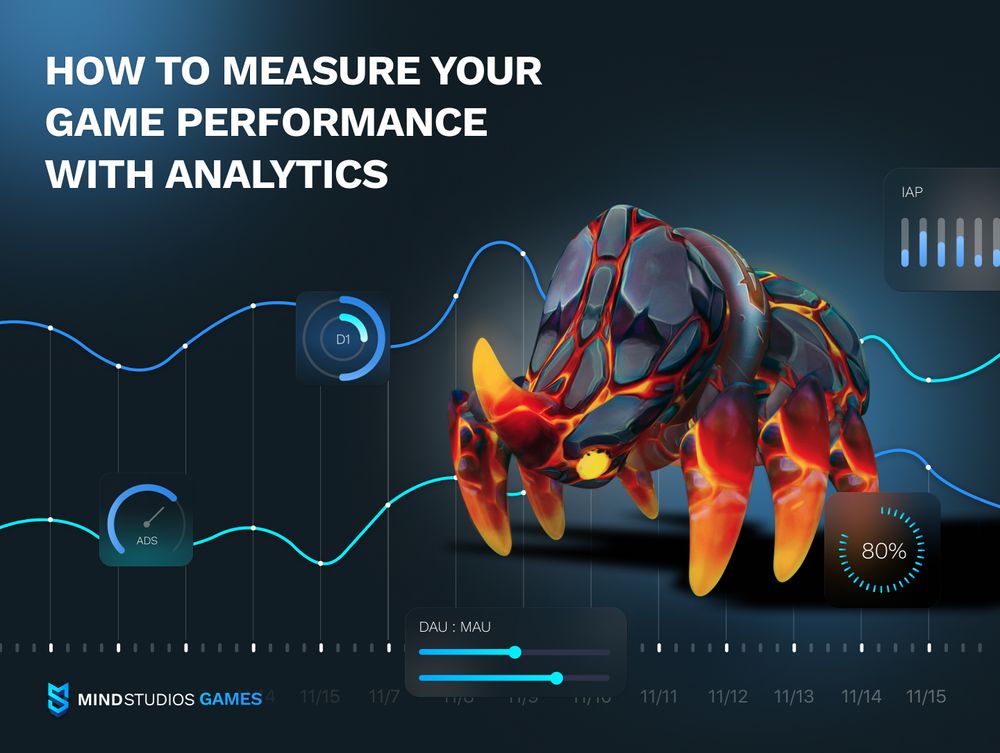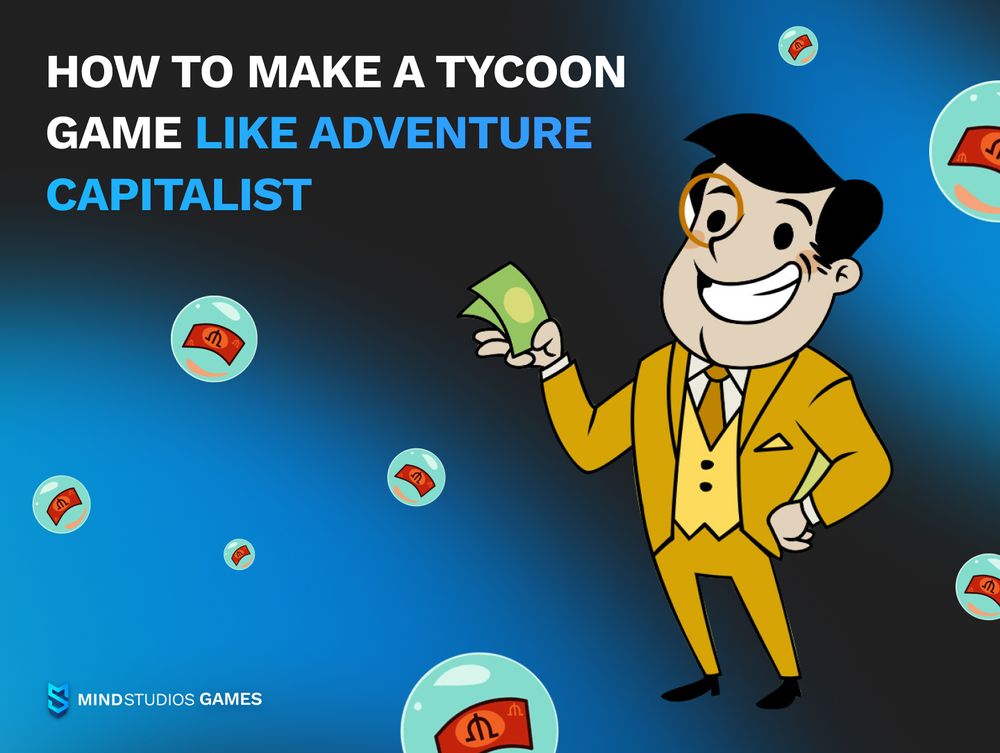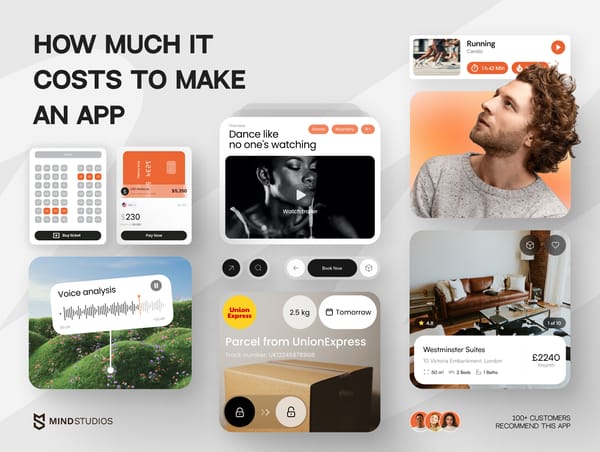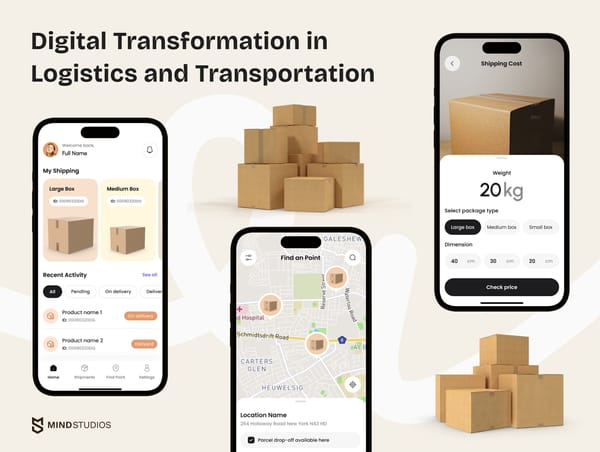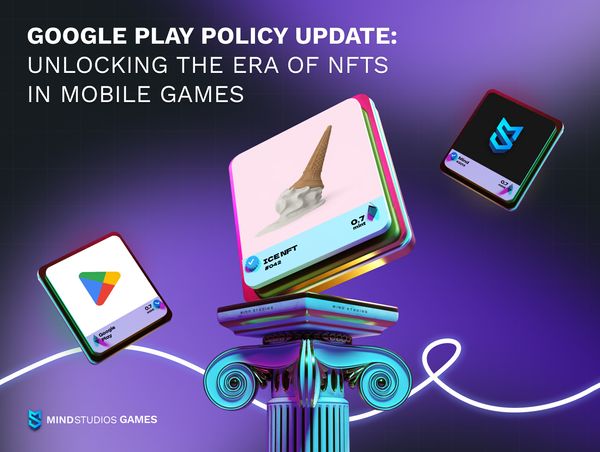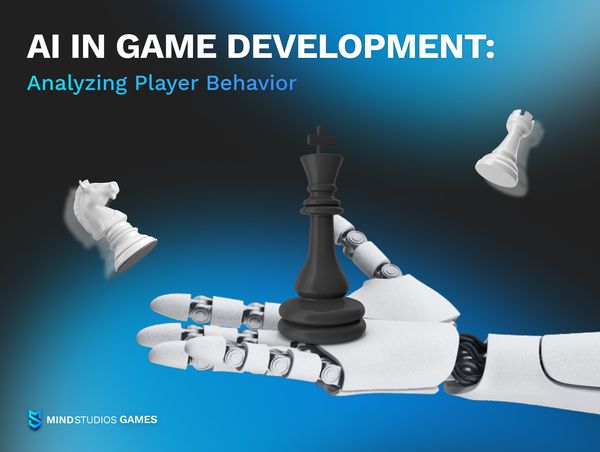It’s 2024, and idle games are still keeping their place in the top-10 genres in video games by popularity; that includes all types of games — PC, mobile, console. It’s in the top-5 among mobile, as per the 2023 Global Games Market report from Newzoo.
If you’re interested in this profitable niche and would like to know how to make an idle game, in this article, we will discuss our experience in idle clicker game design and monetization — the two highly important parts of making a financially successful idle game.
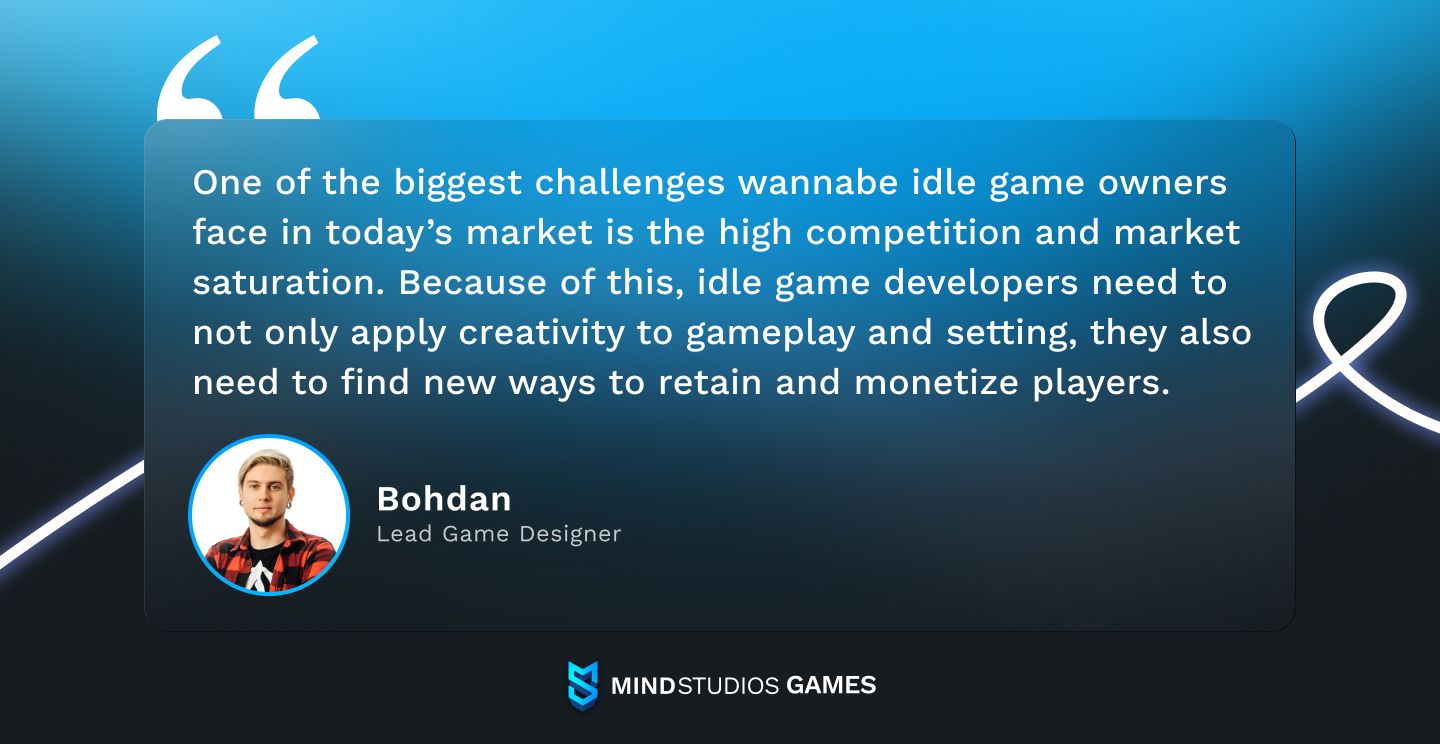
Mind Studios Games has been developing mobile games for over five years, and we’ve built from scratch and launched dozens of idle titles for our outsourcing clients and a number of idle games of our own. We’re also following the newest trends, making hybrid-casual idle arcade games.
Below, you will find insights on idle games monetization and design practices from our lead game designer, gathered over the years of idle game development.
We hope the information we provide is useful, and if you have additional questions about your idle game development idea or if you’re looking for development partners — don’t hesitate to drop us a line in our contact form.
Engaging game design principles for idle games
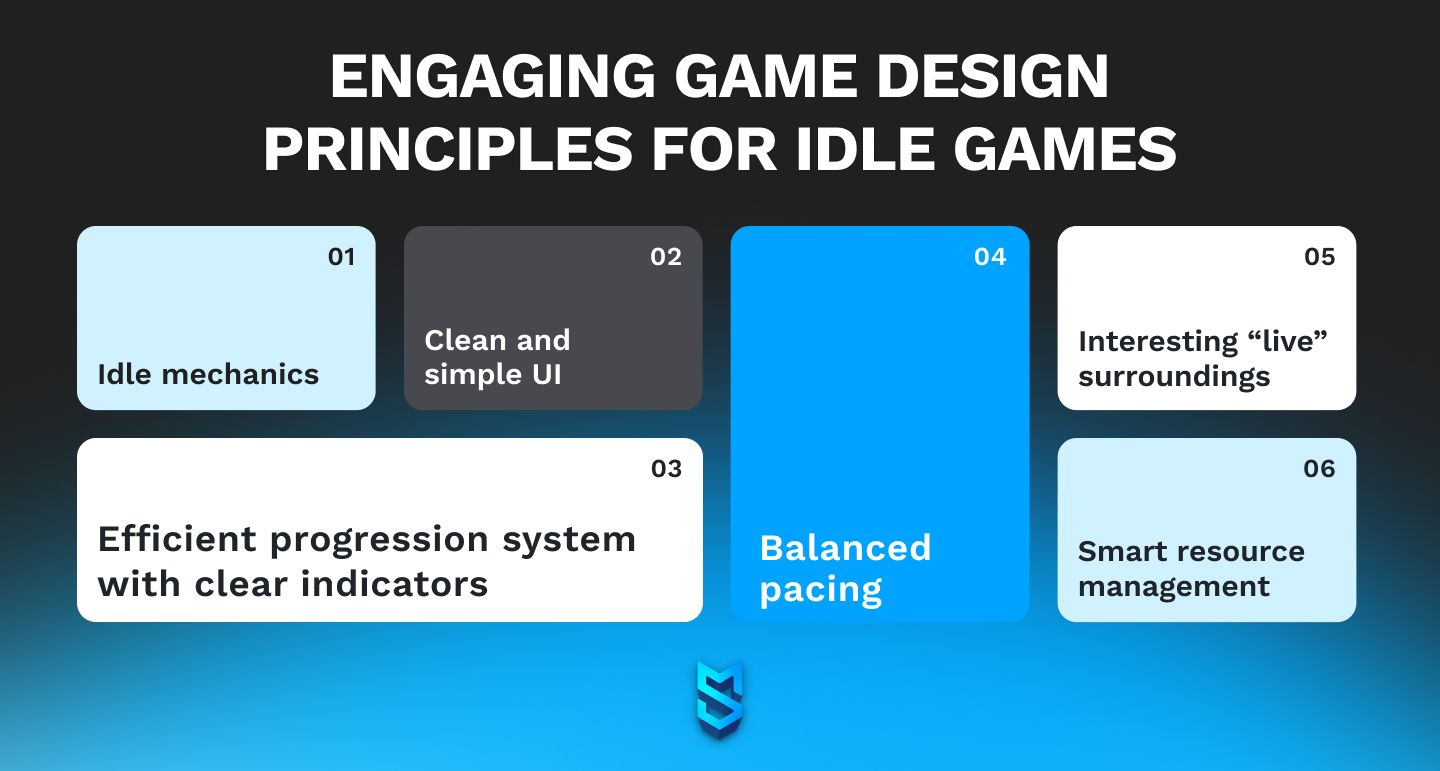
Idle clicker games have one of the shortest times to launch — somewhere between four and six months on average.
Idle games are also fairly cheap to make: it’s not impossible to make a browser idle game with a budget of $5,000 or even less. However, it is equally true that making an idle clicker successful requires some serious work. There are principles to follow.
According to our experience, here are some of the idle game design best practices.
| Idle mechanics | This is self-explanatory. Idle games are attractive to users because of the mechanics that allow for passive resource accumulation. |
| Clean and simple UI | Idle games have short gaming sessions, and players use them for a brief relaxation and respite. Hence, it’s important for a title in this genre to have simple and intuitive UI and UX, with little to no learning curve. As for “clean”, what our game designers mean by this is that the players’ focus needs to stay on the gameplay. Complex and overflowing menus will distract users, making the game less engaging. Let them focus on the game's mechanics to keep them coming back. |
| Interesting “live” surroundings | In idle games, players spend 99% of their time just staring at the screen and clicking/tapping. For this process to not get boring, you need to make everything on the main screen interesting for the players to watch. While your game’s setting and graphics of choice can be practically anything, it’s vital to keep the consistent action on the screen for players to have something to keep their attention. |
| Efficient progression system with clear indicators | A rewarding progression system that provides players with a sense of achievement goes a long way towards ensuring high engagement of an idle title. Rewards need to be clearly indicated to create a feeling that there’s a reachable goal ahead. And the goal must be there. Be it something big or a series of smaller objectives, a player needs something to look forward to. |
| Balanced pacing | Overwhelming players with content right away is rarely a good thing in idle clicker game design. You need to balance things — smaller but frequent and meaningful rewards at the beginning of gameplay to hook players; as the game progresses, the rewards can become bigger but less frequent due to higher complexity of “quests”. |
| Smart resource management | Well-thought-out resource management mechanics require players to make strategic decisions about how to allocate their resources to optimize progress. This keeps them engaged and offers the feeling of achievement when the goals are met. |
These six principles make for a solid foundation to build your game upon. However, there’s more to making an idle game a success story. To keep your players coming back, you’ll have to employ retention strategies. So we shall talk a bit about those next.
Player retention strategies we use in idle games
Before we start, there’s a necessary bit of data: idle games are among leaders when it comes to retention in mobile games.
For retention, the top 25% of idle games take the lead right from D1 — reaching as high as 42%.
Basically, this game type uses the people’s fear of missing out on opportunities to drag players back into the game, day after day after day. That’s one of the open secrets in designing idle clicker games.
That is not to say, of course, that whatever you do, your idle clicker will have high retention. Unfortunately, it’s not that simple. (We wish it was!)
Following is the list our lead game designer drew up for our readers.
Optimize the first impression
You need to make sure that the players’ first experience with your idle clicker game is as positive as possible. Quick entry, intuitive interface, and early first “victories” with rewards will create the desire in players to come back into the game. Make the core loop exceedingly simple for players to repeat it and obtain rewards easily. And hide buttons at the beginning, rolling them out only when they become relevant for the gameplay.
Add daily tasks and bonuses
Provide players with incentives to open the game every day by giving them login bonuses. And a list of tasks to complete daily will work as stimuli to spend more time playing.
At the same time, you need to keep the tasks simple enough to complete relatively quickly so that you don’t lose the edge offered by idle mechanics (i.e., an opportunity to play in short sessions).
Limit offline income generation
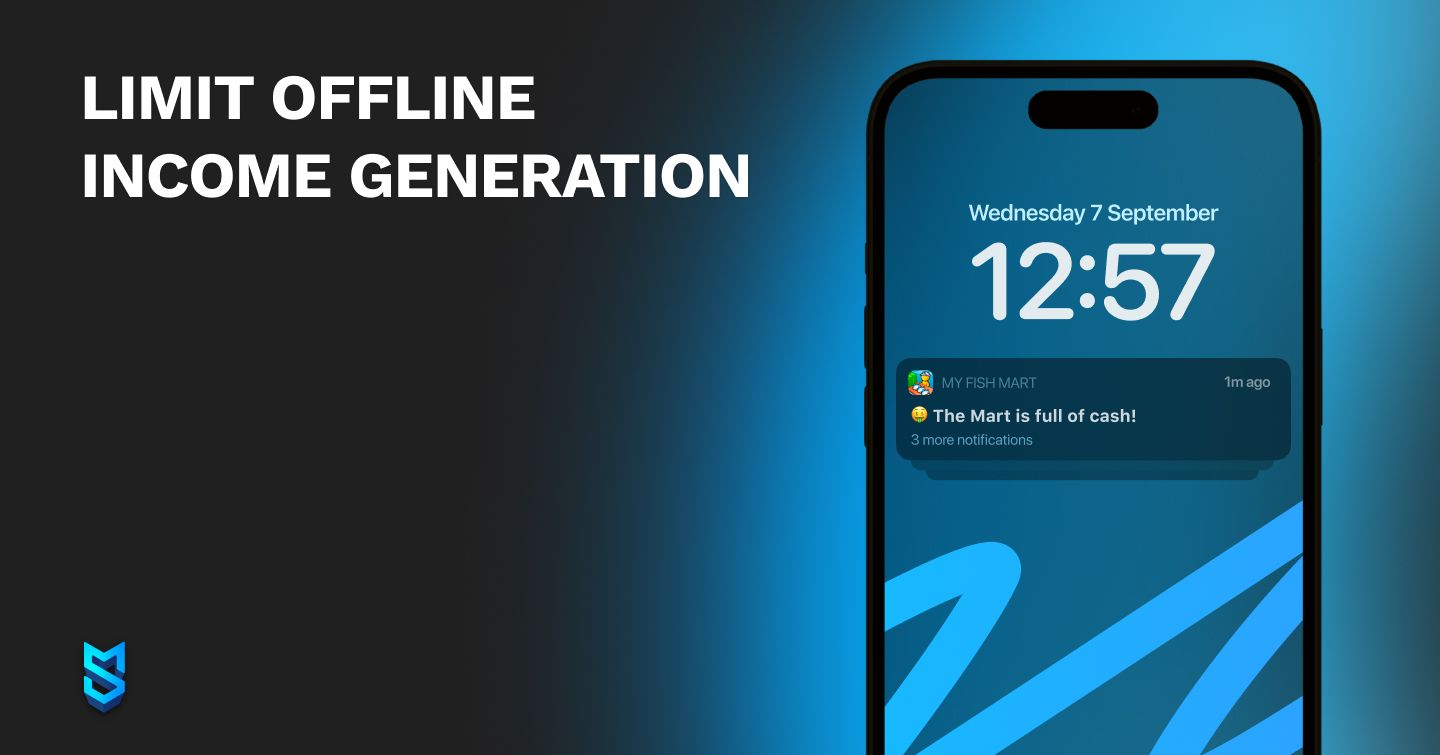
Offline income generation is one of the main mechanics in idle games, employed for increasing retention. It’s a traditional feature, the one that creates incentives for players to come back to the game: players see that the virtual world keeps evolving even when they’re not playing, and when they come back it rewards them. The positive emotion ties players to the game.
However, to actually push players to come back, there needs to be a limit for offline income, after which the accumulation stops, creating the feeling of lost opportunity. The limit might be set for a certain time after the last login, or for a specific amount of income generated. Well-planned limits motivate players to interact with the game regularly, maintaining their engagement.
Create progressive difficulty and achievements
Create a system that rewards progress and development, and offers sneak peeks into the yet-to-be-unlocked content. Gradual difficulty increase and achievements will help keep the game interesting to players at different stages of engagement.
Employ social elements and competition
Leaderboards and competition-like quests between players can increase engagement and entice players to come back to your idle clicker games more often.
Send out push notifications
Timing notifications effectively is a game of trial and error, but when you nail it, it can make your game’s retention soar into the sky. The most straightforward way to use push notifications is to tie them to rewards, new content, and important in-game events or updates. However, be careful to not overdo it — too many notifications will irritate users and prompt them to drop your game rather than come back to play.
Add narrative elements and charismatic characters
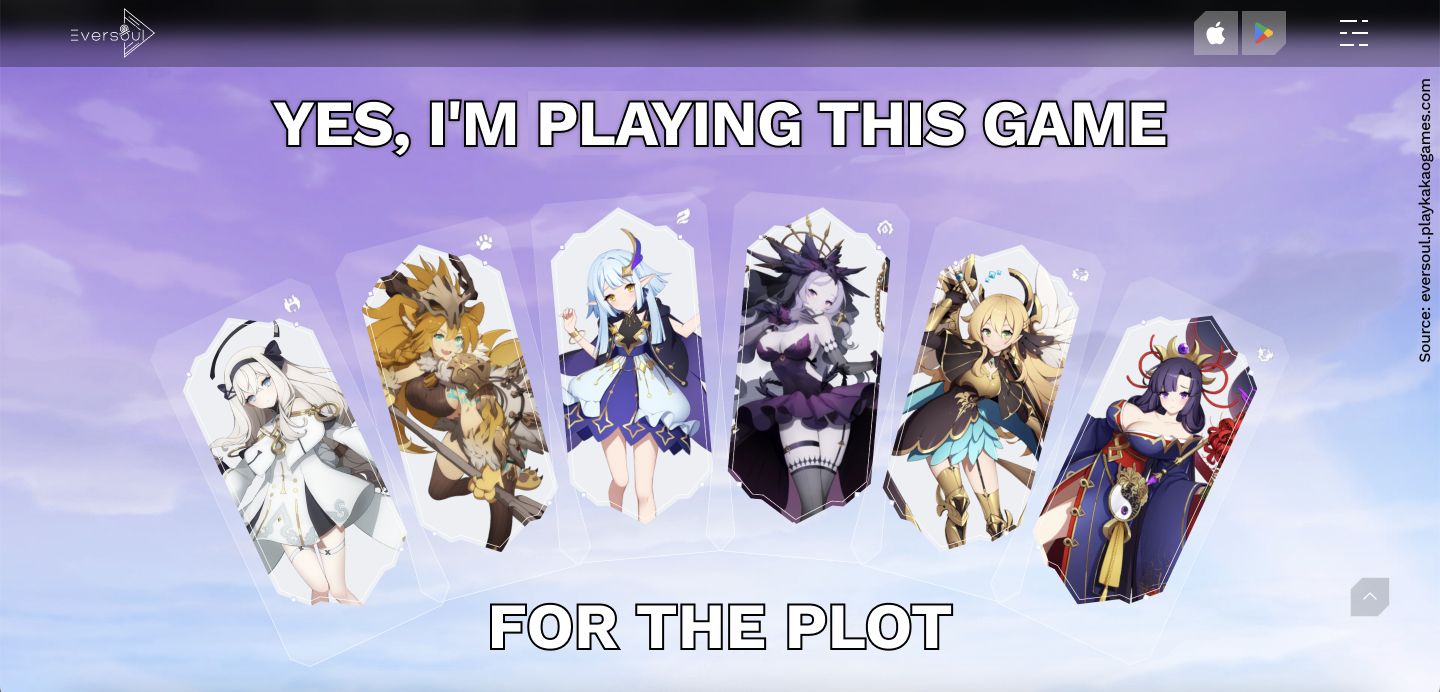
[Source: Eversoul]
While idle isn’t traditionally a narrative-driven genre, using narrative elements can be beneficial for engagement and retention. A story that unfolds as new levels unlock, or characters that captivate with their goals or backstories, will make players connect with the game emotionally, pulling them back to continue on the journey.
Monetization models for idle games
Traditionally, idle games used a mix of in-app purchases (IAPs) and ads for monetization, with the revenue distribution of approximately 60–70% ads and 30–40% IAPs. The secret behind these fairly high IAP numbers would be their simplicity and low prices, due to which the purchase decision is easy to make. Also, there are different kinds of ads.
In-app purchases |
In idle games, you can sell:
|
Rewarded ads |
Rewarded ads bring in the biggest chunk of money to idle game owners. You can use rewarded ads as a more short-term alternative to IAPs. For example, a paid 2x income booster lasts for 24 hours, but the player can also get a 2x income booster for 5 mins by watching an ad. Or, a paid speed-up finishes the current cycle of production instantly, but an ad can shorten its time by 20 mins. |
Interstitial ads |
These are full-screen ads that pop up at certain intervals and can’t be skipped right away. They are used by developers to monetize all users, including those that don’t go for rewarded ads. However, since these ads are quite irritating for players, it’s recommended to make them skippable after 3–5 seconds of watching. Interstitials bring in about haft as much income to game owners as rewarded ads, but they work well with pop-up IAPs that offer to get rid of ads. |
Banner ads |
Traditional idle games are quite suitable for banner ads, since the screen mostly hosts a single scantily animated image and action is mostly happening without user participation. The wandering gaze might stop at a banner at the top or bottom. Banner ads are useful as an extra, though, since they bring in less revenue per impression than any other type of ads. |
In most cases, idle game developers employ a combination of the first three models in the table above, sometimes replacing interstitials with banner ads.
In addition to the listed above, the recent evolution of idle clicker games brought new monetization opportunities. With the emergence of the arcade idle sub-genre, idle game developers began to make use of battle-pass-like subscription monetization. By offering significant daily perks to subscribers, idle games can lure players to buy a battle pass. The perks do need solid research to work out for the best results.
Balancing monetization and player experience
Since we’ve established your options for idle games monetization, now let us offer some insights into keeping your retention high while making money. As with many things in game development, you need balance between monetization and player experience. How to achieve this?
To successfully implement monetization while creating positive player experience, put in place a strategy based on the dynamic rhythm of the game economy.
Here’s how Bohdan, or lead game designer, describes it:
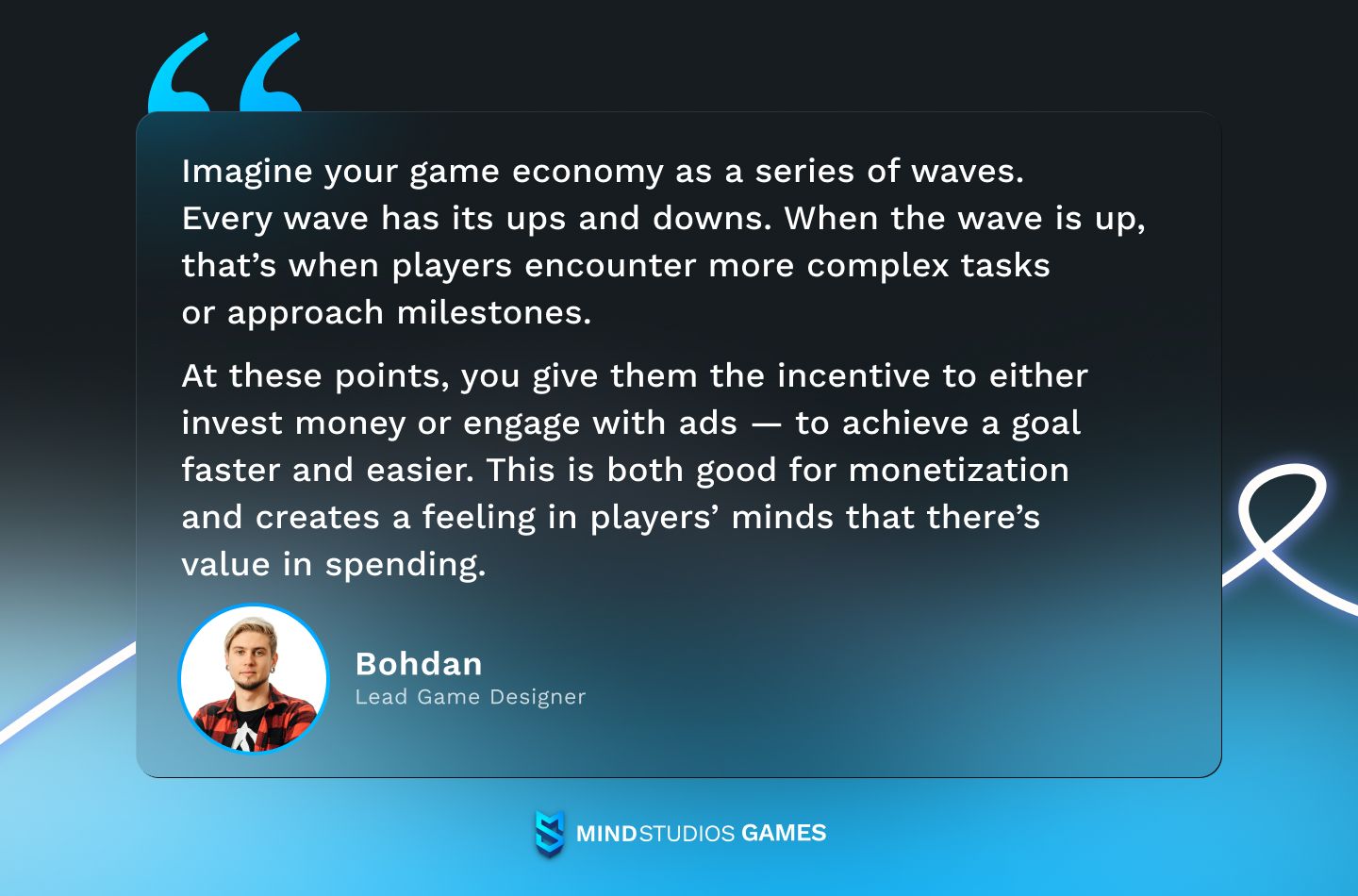
This strategy serves two objectives:
- Players don’t get tired of the pressure to achieve something constantly.
- The feeling of reaching a goal successfully lasts longer, keeping players interested in the game.
In our idle game My Fish Mart (Android, iOS), we developed a system for interstitial ads where the players’ first steps in the game are devoid of ads. We encourage our new users to immerse themselves into the game smoothly and without interruptions, thus increasing retention. As players progress, we increase the frequency of interstitial ads — gradually, at a pace where players get used to them little by little. This way, we keep the engagement at fairly high levels while getting decent levels of ad views.
Analytics and data-driven design
Analytics play a crucial role in idle game development; they provide developers with valuable insights into player behavior, preferences, and engagement patterns. By leveraging analytics effectively, developers can make informed design decisions, optimize the game experience, and ultimately create more engaging and successful idle clicker games.
Here’s what analytics can assist with when it comes to idle clicker game design.
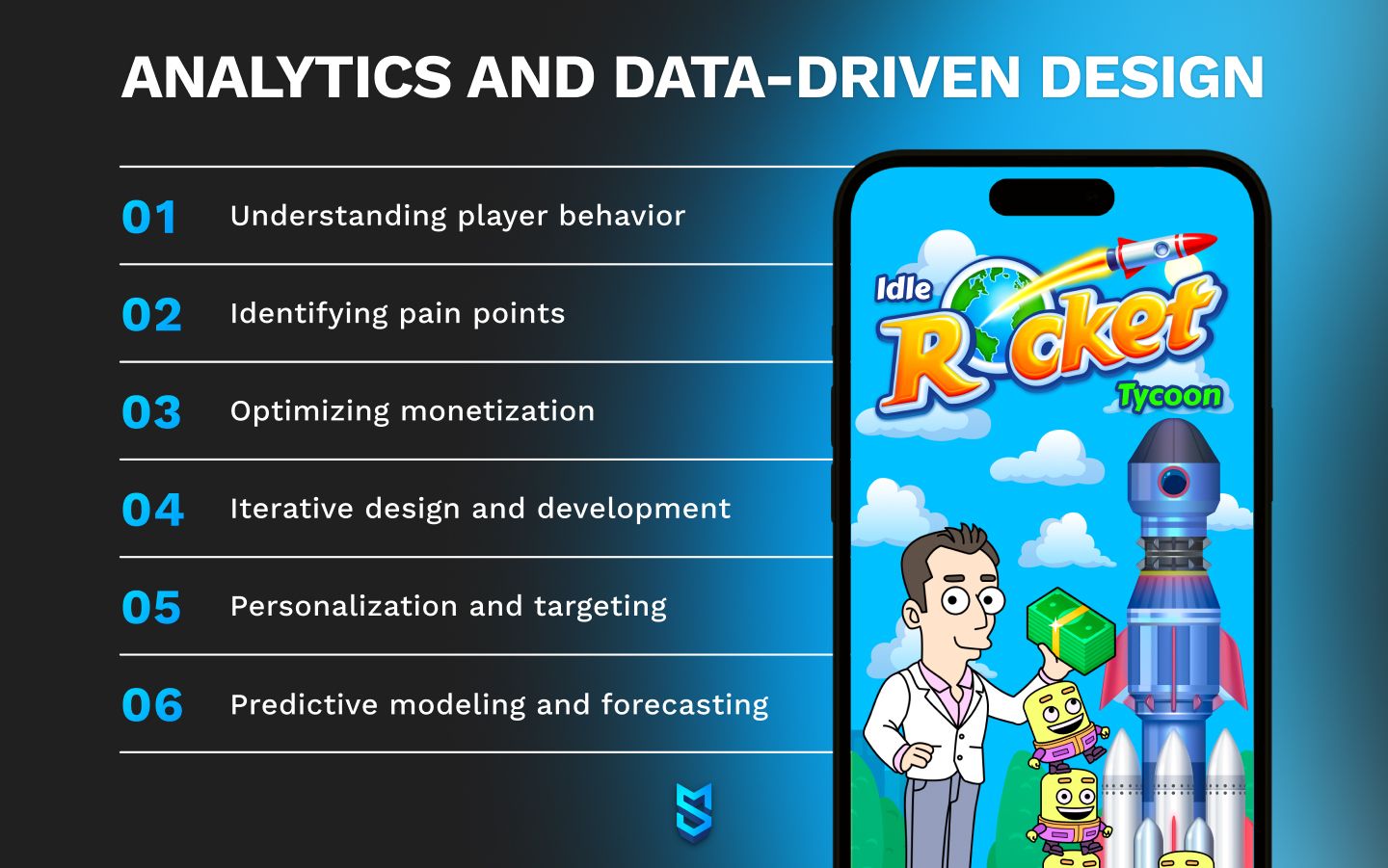
Understanding player behavior
Analytics help developers understand how players interact with the game, including which features they use most frequently, how long they play, and at what points they stop playing. This information allows game designers to identify areas for improvement and optimize the game experience.
Identifying pain points
By analyzing player data, we can identify areas of frustration within the game. This might include bottlenecks in progression, imbalances in resource management, or unclear instructions. Identifying and addressing these issues can improve player satisfaction and retention.
Optimizing monetization
Tracking key metrics is vital for idle game monetization. Such metrics include conversion rates, average revenue per user (ARPU), lifetime value (LTV) of players, ads watched per user, and more. By analyzing these metrics, we can optimize their monetization strategies, adjust pricing for in-app purchases, refine ad placement, and introduce new monetization features.
Iterative design and development
We mostly work with Agile and Scrum methodologies, developing games in sprints. By employing analytics nearly from the beginning, we can make data-driven decisions about which features to prioritize, how to balance gameplay mechanics, and when to introduce new content or updates. This iterative process helps ensure that the game evolves in response to player feedback and market trends.
Personalization and targeting
Analyzing player data enables game designers to segment players based on various characteristics, such as engagement level, spending habits, or preferences. By understanding these segments, we can tailor the game experience through targeted content, offers, or promotions, ultimately improving player satisfaction and retention. This process becomes even more effective with the use of AI-based analytics.
Predictive modeling and forecasting
By analyzing historical player data, game developers can build predictive models to forecast future player behavior, such as churn rates, revenue projections, or the impact of new features. This enables us to anticipate trends, identify potential risks, and make proactive adjustments to the game strategy.
Game designers and producers at Mind Studios Games are adept at using research and analytics to power our idle game development. We’re using hands-on manual research (powered by our passion for gaming) as well as a variety of analytics services, including AI-based ones, for faster and more precise data collection.
Challenges and solutions in idle clicker game design and monetization
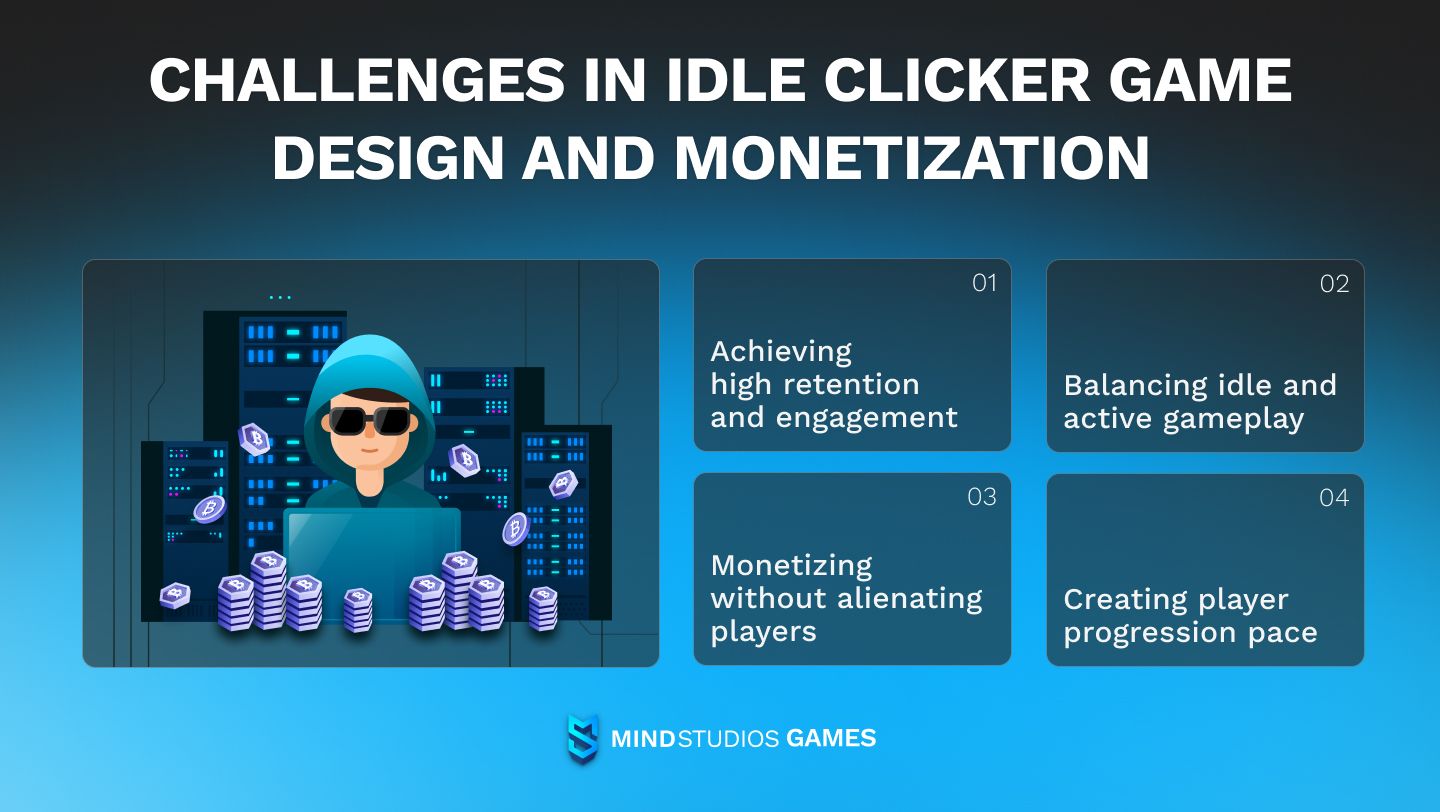
Players’ engagement and monetization are the frenemies in the toolkit of an idle game designer. We need them to work together for the benefit of both game owners and players, but they’re often getting in the way of each other. (Mostly, monetization is in the way of engagement 😅)
But there are, of course, ways to do it successfully.
Challenge |
Solution |
|---|---|
Achieving (and keeping) high retention and engagement |
Introduce a variety of gameplay mechanics, upgrades, and progression systems. Even a simple mini-game with alternative mechanics can enrich players’ experience greatly. Regularly update the game with new content, events, and challenges to keep things fresh. Implement social features, leaderboards, and achievements to encourage competition and collaboration among players. |
Balancing idle and active gameplay |
Provide options for players to customize their gameplay experience, allowing them to focus on idle progression or engage in more active gameplay. Offer incentives for both idle and active play styles, such as rewarding players for checking in regularly while still allowing progress during idle periods. |
Monetizing without alienating players |
Design the game to be enjoyable and rewarding for free players, but implement a variety of monetization methods that offer value to players without being overly intrusive:
Use interstitial ads carefully. |
Creating player progression pace |
Design and implement a scalable progression system that adjusts the pace of advancement based on player activity and upgrades. Offer meaningful goals and milestones to work towards, with rewards that encourage continued play. Allow players to customize their progression pace through upgrades or gameplay options. |
Case studies and success stories
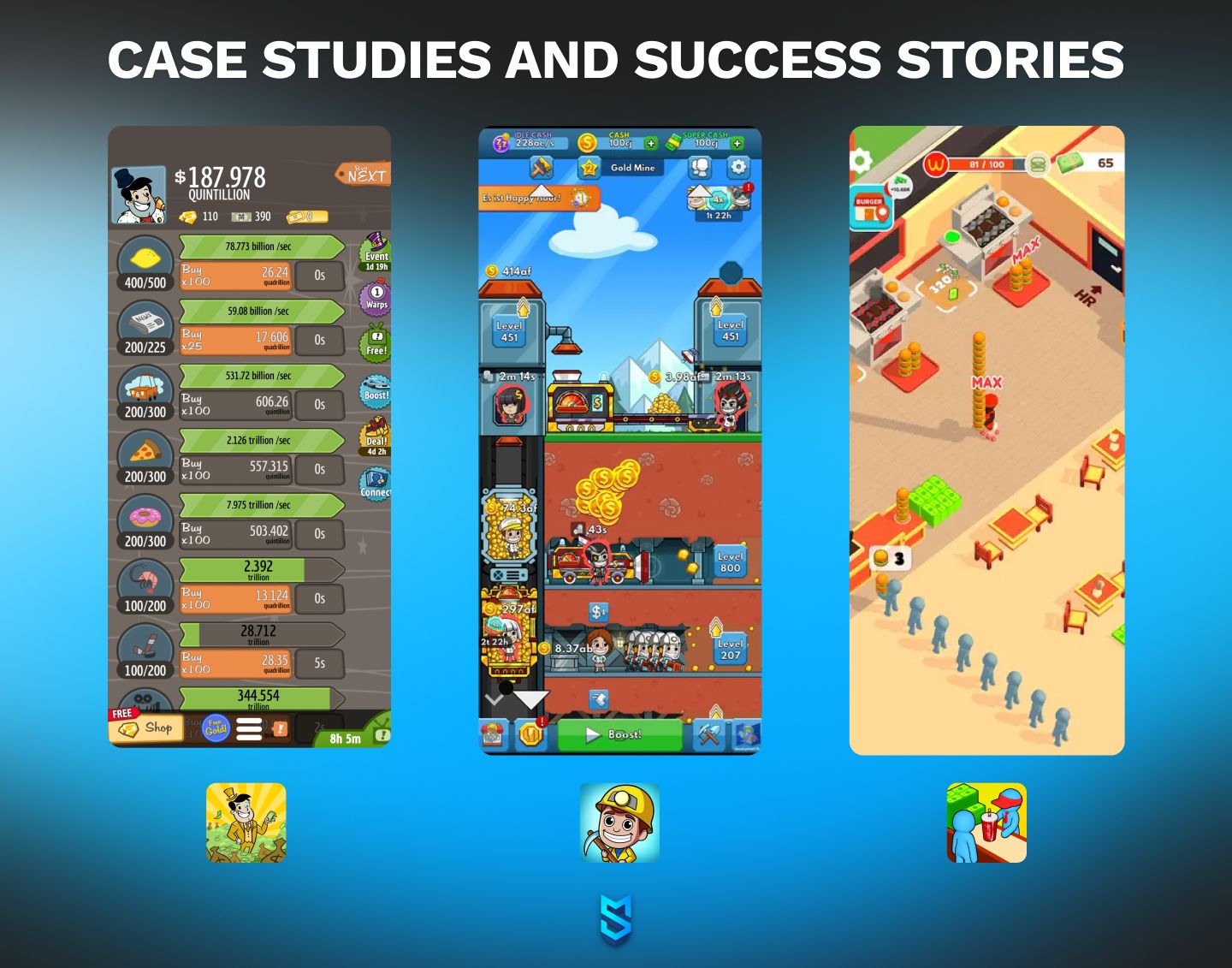
The biggest success story of the idle game development would undoubtedly be the AdVenture Capitalist game. It’s been popular for years, making it the prime example for all the idle game designers out there.
The ingenious thing the game’s creators did was combining the satirical settings with caricature-like art for impact, of course. But the game also features a wide variety of options for business evolution and a smart progression system with well-thought-out prestige levels.
Another popular example of idle clicker games would be the Idle Miner Tycoon game, where game designers decided to switch things around and made players dig down instead of building up. Additionally, the great solution for the game was to make gaining wealth a secondary mechanic to the digging.
Finally, in the latest years, the hybrid-casual arcade idle games became a hit, with titles like Burger, Please! gaining a lot of fame — the game took #3 spot on the list of most downloaded new apps in 2023. While part of its success must be attributed to it being the game from Supercent, the title also boasts a universally appealing setting and smart monetization — about 80% of ads in the game are rewarded videos.
Conclusion
The idle clicker genre is evolving instead of dying down as some skeptics expected it to. Whether it’s traditional incremental games or more mechanic-rich idle arcades, these titles are still conquering charts and bringing their owners impressive profits.
At the same time, the lure of profits made the market oversaturated, and standing out became a challenge not every game developer would try to beat. Knowing the ins and outs of idle clicker game design became absolutely essential to even attempt to climb that mountain.
We at Mind Studios Games have been creating idle games for several years now, trying different approaches and going as far as creating our own engine for idle income accumulation in this type of games. If you’re looking for a partner who knows how to make an idle game in Unity, get in touch with us — we can offer analysis, insights, and development services for games in this genre.

